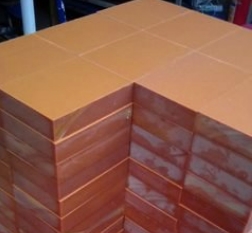- 31
- Mar
For some questions and answers about epoxy glass fiber cloth laminate, you will know more after reading
For some questions and answers about epoxy glass fiber cloth laminate, you will know more after reading
Epoxy glass fiber cloth laminate is the base material of printed circuit boards. The material is glass fiber, and the main component is SiO2. The glass fiber is woven into a cloth and coated with epoxy resin, which is a very complicated process.

1. Use it to have a certain degree of plasticity and toughness as the shell of some equipment or machinery, such as cars, yachts, etc.
2, the substrate of the circuit board.
1. What are the specifications of epoxy glass cloth board and what is epoxy board?
The epoxy glass cloth board is yellow, the material is epoxy resin, and the epoxy glass fiber board is made of glass fiber, which is generally water green. Its temperature resistance is higher than that of the epoxy glass cloth board, and its insulation in all aspects is also better. On epoxy glass cloth
2. What is the difference between epoxy resin board and epoxy glass cloth board?
According to popular saying, the two are actually the same, but the epoxy resin board omitted the reinforcing material.
There is a difference between the two. There are many kinds of reinforcing materials for epoxy resin board, the common one is glass cloth, as well as glass mat, glass fiber, mica, etc., and they have different uses.
Epoxy fiberglass board is also called reinforced fiberglass board. It is suitable for mechanical, electrical and electronic components with high insulation. It has high mechanical and dielectric properties, good heat resistance and moisture resistance.
It has the following characteristics:
1. Various forms
Various resins, curing agents, and modifier systems can almost adapt to the requirements of various applications on the form, and the range can be from extremely low viscosity to high melting point solids.
2. Convenient curing
Choose a variety of different curing agents, the epoxy resin system can almost be cured in the temperature range of 0~180℃.
3, strong adhesion
The existence of polar hydroxyl and ether bond inherent in the molecular chain of epoxy resin makes it have high adhesion to various substances. The shrinkage of epoxy resin is low when curing, and the internal stress generated is small, which also helps to improve the adhesion strength.
4, low shrinkage
“The reaction of the epoxy resin and the curing agent used is carried out by direct addition reaction or ring-opening polymerization reaction of epoxy groups in the resin molecule, and no water or other volatile by-products are released. Compared with unsaturated polyester resins and phenolic resins, they show very low shrinkage (less than 2%) during curing.
5. Mechanical properties
The cured epoxy resin system has excellent mechanical properties.
